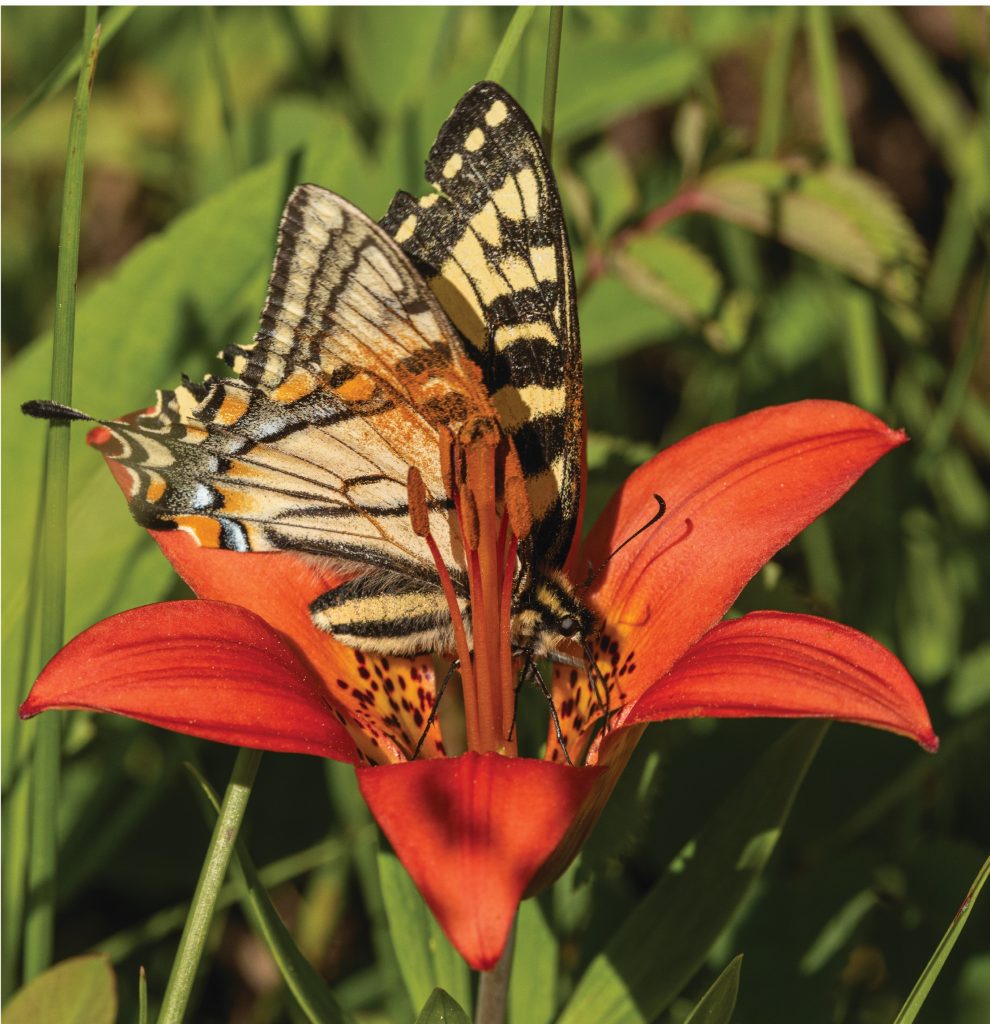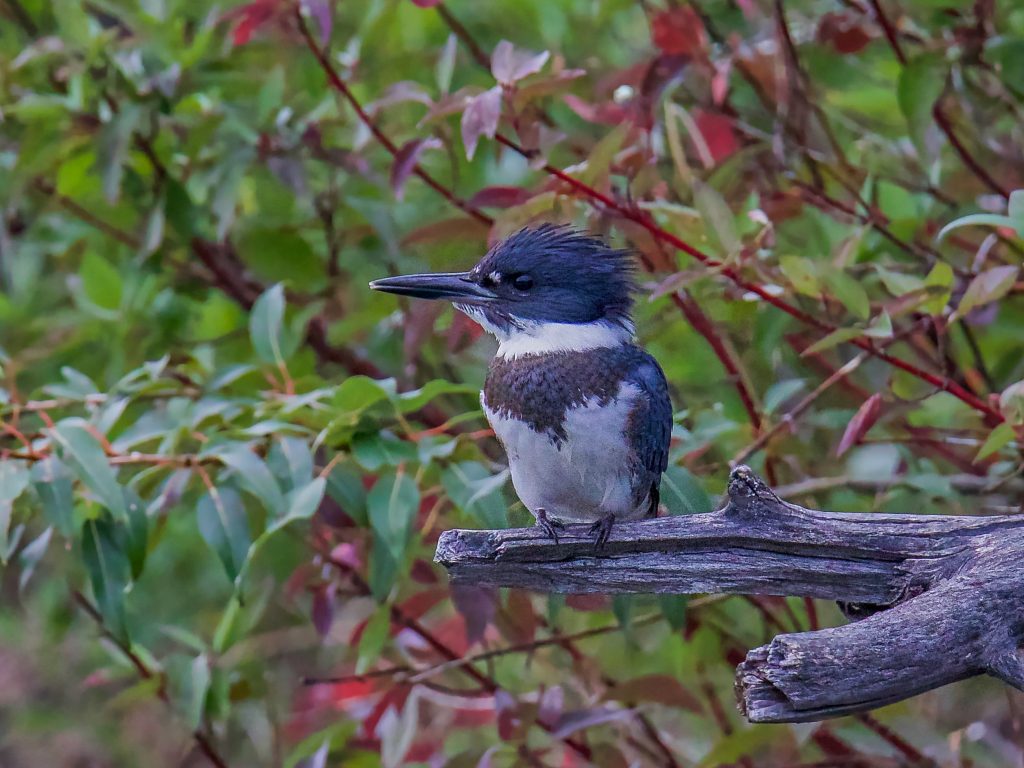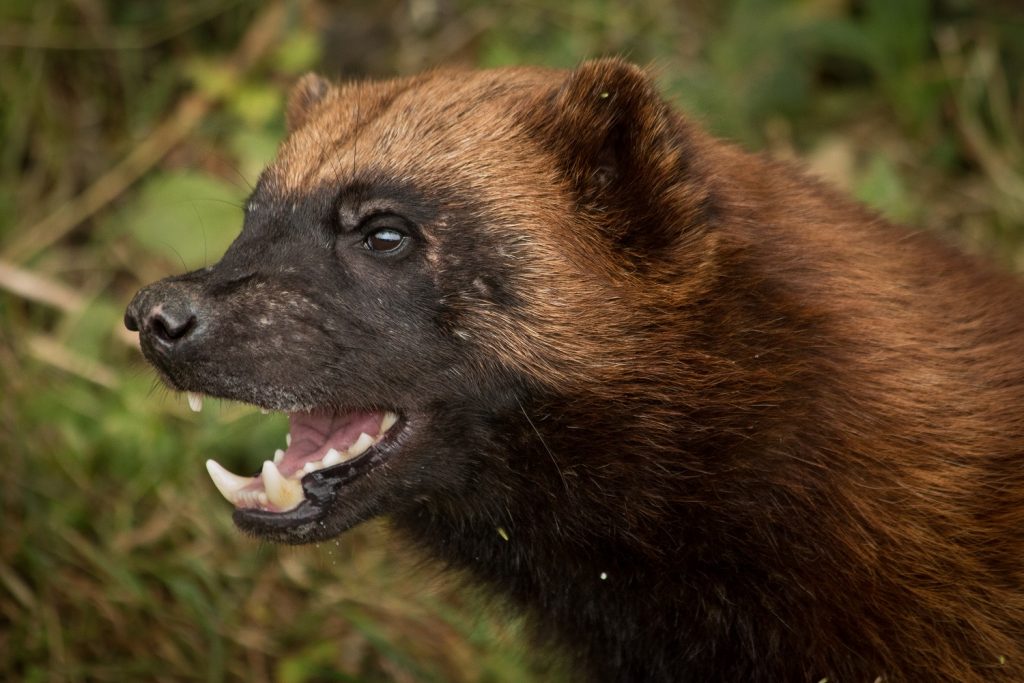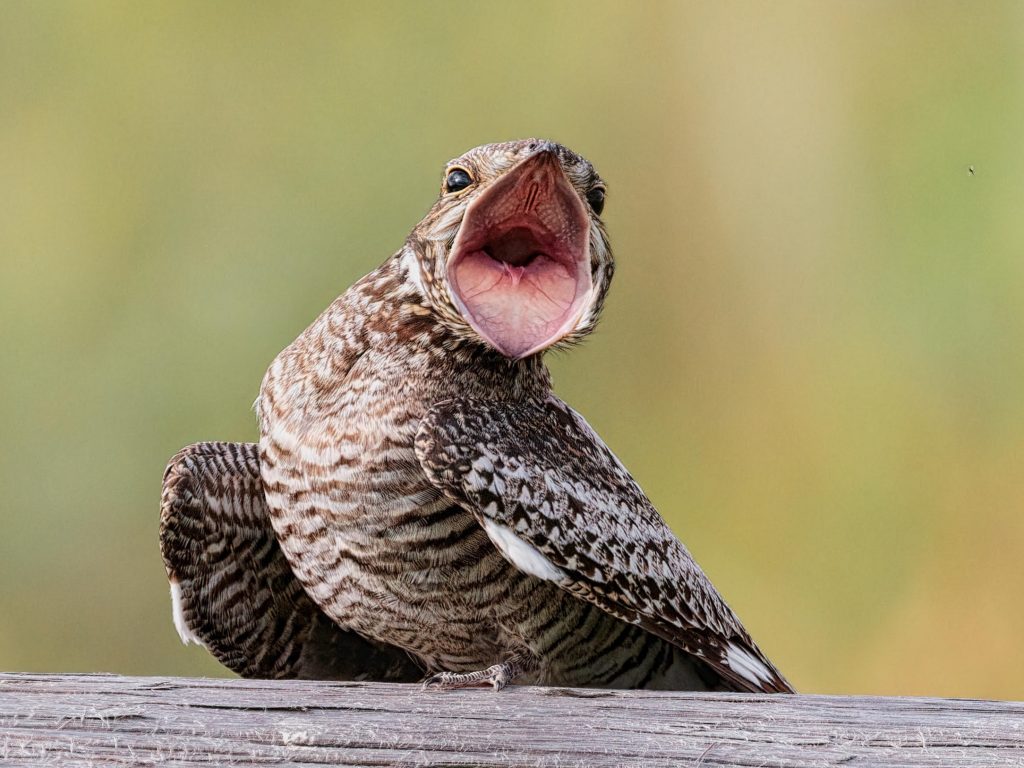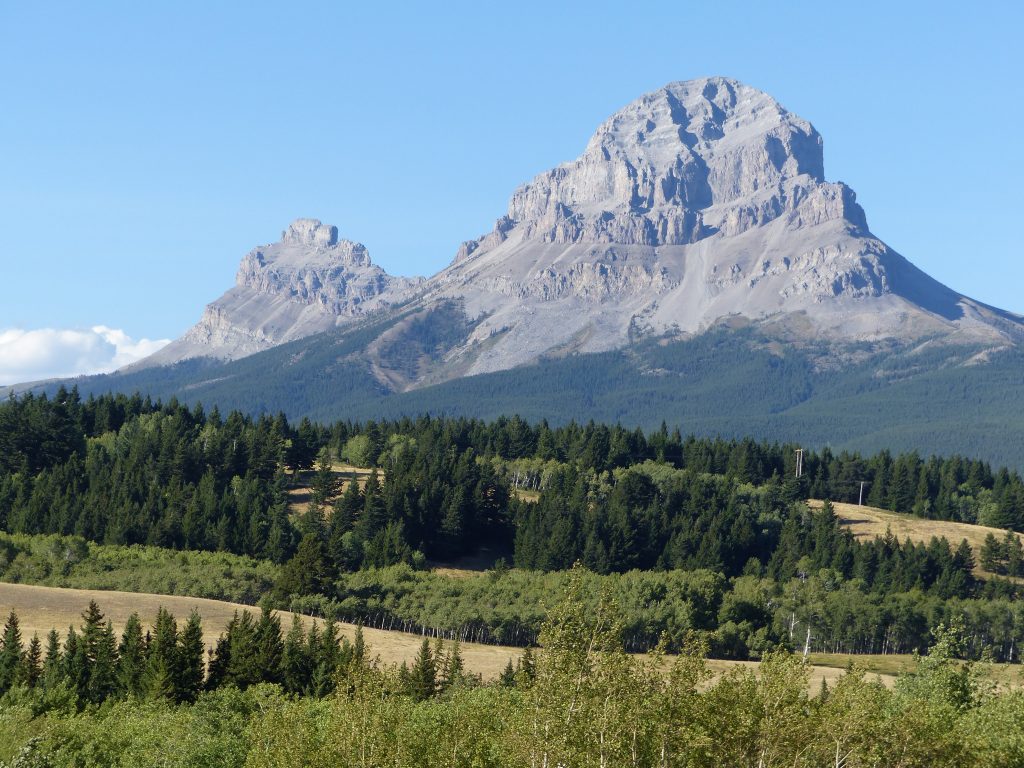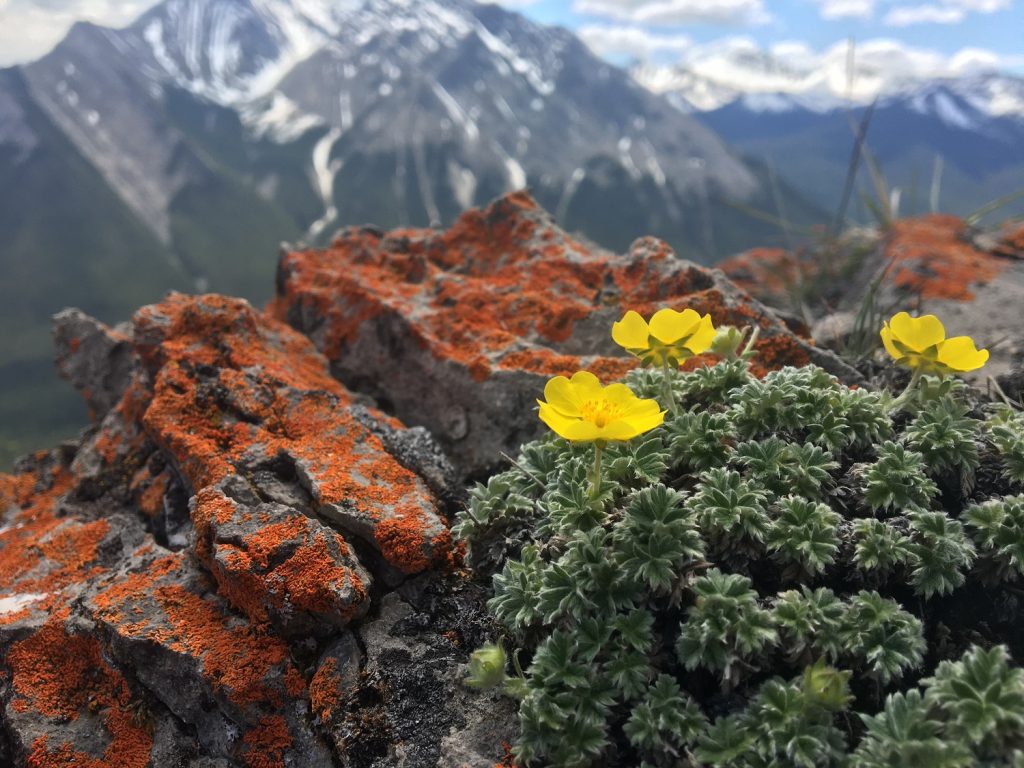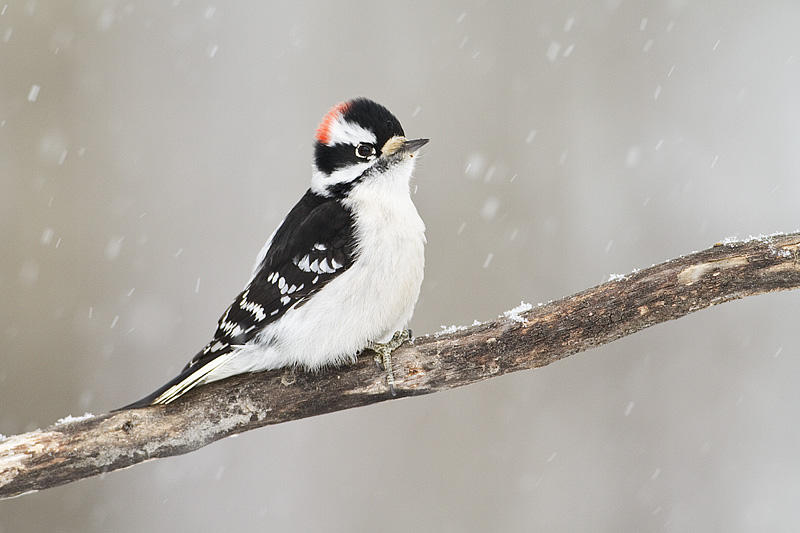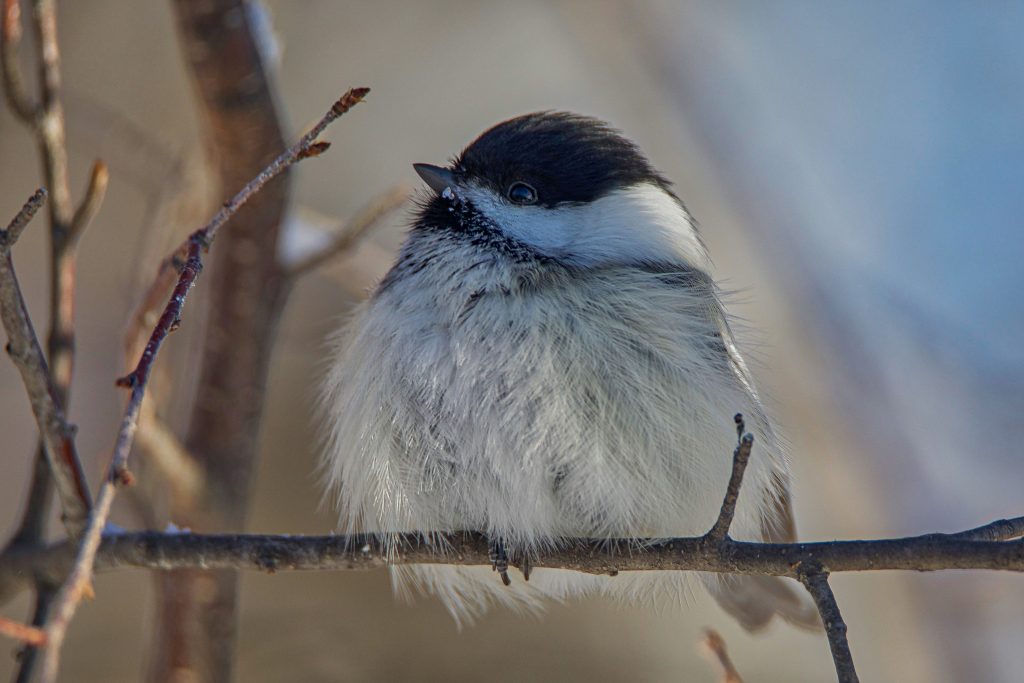Featured Species
Pollination on a Wing and a Prayer: Wood Lilies and Swallowtails
BY LAWRENCE HARDER & TIM SCHOWALTER
Examine the remarkably close relationship between wood lilies and swallowtail butterflies.
Read MoreKingfishers: Keeping a Watchful Eye on the Water
BY MARGOT HERVIEUX
If you spend time along rivers or small lakes this summer, you may be lucky enough to spot a kingfisher. There are many kinds of kingfishers in other parts of the world but in Canada we only have one species: the belted kingfisher.
Read MoreDeath by “Data Deficient”: The Disappearance of Wolverines in Alberta’s Eastern Slopes
BY GILLIAN CHOW-FRASER
Olaus Murie once wrote, “I wonder if there is another inhabitant of northern wilderness that so excites the imagination.”1 The species he was referring to? None other than the wolverine.
More than 60 years later, the same thought ran through my mind as I tracked through the foothills of Alberta’s Rocky Mountains. Would this be the day? Would I be able to catch even a brief glimpse of a wolverine’s bushy tail in the distance?
Read MoreJaw-Dropping Bird – The Common Nighthawk
BY DORIS MAY & STEPH WEIZENBACH
Feel the Noise
BOOM! The first time I heard this loud, unnerving sound, it reverberated through the ravine where my prairie home lies nestled along a meandering creek. The sound was ominous, like a sound effect you might expect in a tense scene from a Jurassic Park movie.
The Ronald Lake Wood Bison Herd: Observations From Their Home
BY GARRETT RAWLEIGH & LEE HECKER
When people think of bison, they often picture the vast herds of plains bison that once roamed the Great Plains of North America. These massive herds, and the story of their demise, are well known. But how many people are familiar with their larger northern cousin?
Read MoreHow Geology Affects Wildlife Distribution — From Eroding Mountains to Glacial Rivers
BY DALE LECKIE
The distribution of plants and animals in Alberta is closely tied to the landscapes in which they live. Though there are some generalists, like coyotes, most species are adapted to specific landscape types. The development of these landscapes is in turn intimately related to Alberta’s geological history, together with ongoing geological processes. Here we will explore several important examples, including eroding mountain peaks, glaciated landscapes, deeply entrenched river valleys, and arid interior plains located in the rain shadow of the mountains.
Read MoreOn the Trail of Disjunct Alpine Plants from Alberta to Ontario
BY ASHLEY HILLMAN
It’s Day 4 on the trail. It’s humid, hot, and did I mention humid? Our packs are impossibly heavy with food, camping gear, and sampling equipment. I wish there was someone else to blame for deciding to mix backpacking with field sampling, but unfortunately it was my idea. I have already cut myself on a rock and slipped into the frigid waters of Lake Superior as we struggle down the coastal hiking trail of Pukaskwa National Park. But all this suffering has rewarded us with just what we were looking for: plants!
Read MoreWatching Winter Woodpeckers
Black-capped chickadees are certainly our most common winter feeder visitors, but downy woodpeckers are often a close second. Both downies and their larger cousins, hairy woodpeckers, are year-round residents in our winter forests.
Read MoreWhat Happened to the Northern Leopard Frog?
BY LAURA SOUTHWELL
The northern leopard frog is an iconic amphibian, likely the very image that comes to mind when you hear the word “frog.” This once ubiquitous resident of prairie wetlands has faced an ongoing struggle against a changing and increasingly human-centric environment.
Weathering Winter with Chickadees
Alberta is home to four chickadee species. Black-capped chickadees are the most common and widespread. They are found across the entire province and are not only the easiest bird species to attract to backyard bird feeders, but also hold the distinction of being Canada’s most common feeder species. Their small size, cheery countenance, and remarkable hardiness endear them to their human neighbours.
Read More
